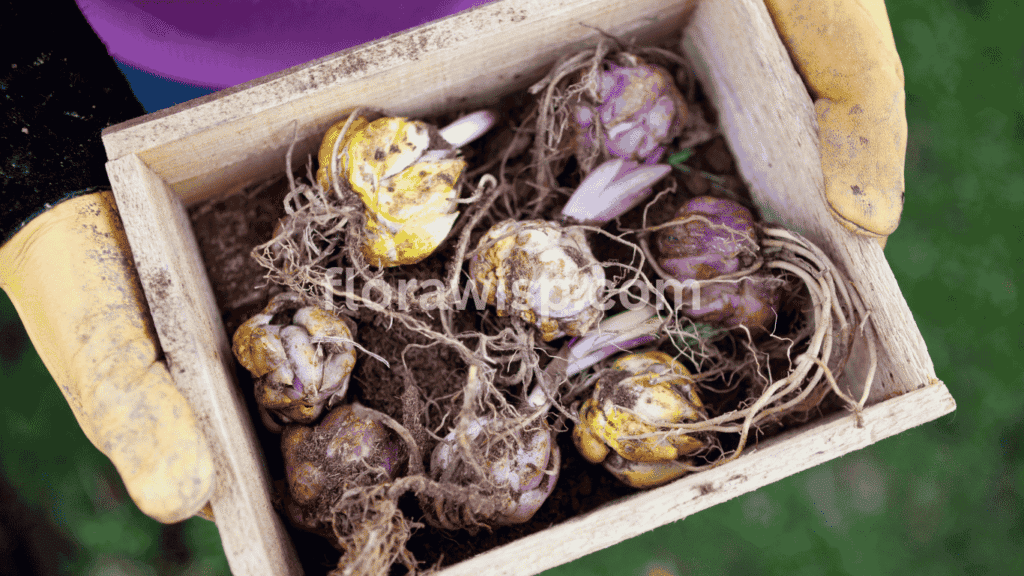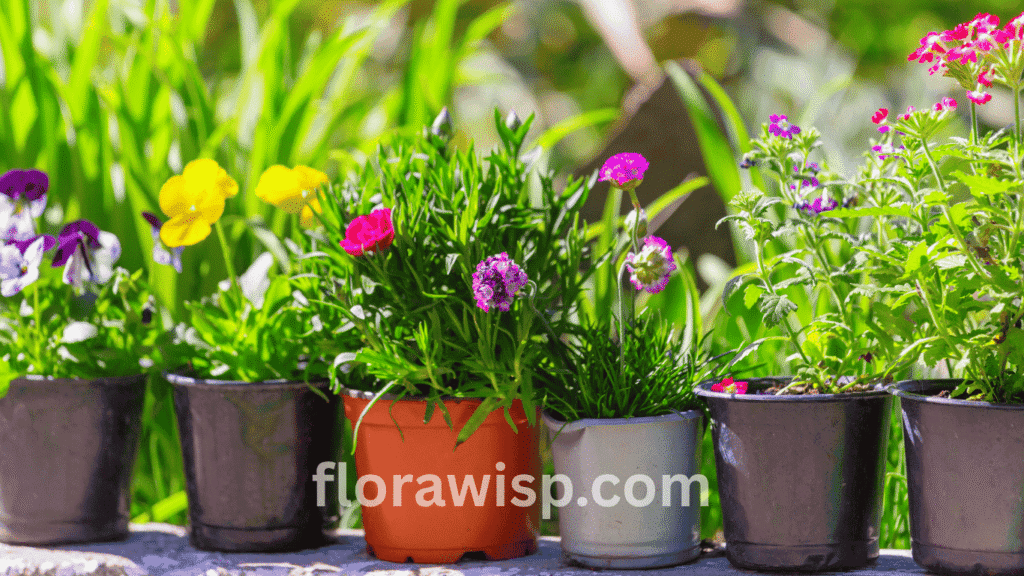Lily bulbs have an unmatched ability to bring elegance and color to any garden, making them one of the most cherished flowers among U.S. gardeners. From Asiatic lilies with their bold hues to Oriental lilies known for their sweet fragrance, the beauty of lilies begins with the health of their bulbs.
Over my 15 years as a lily gardener, I’ve learned that thriving blooms always start with carefully chosen, high-quality lily bulbs. If you prefer container gardening, don’t miss my hands-on guide on Lilies in a Pot. Among all varieties, white lilies have consistently stood out in my garden for their timeless beauty and rich symbolism. In this guide, I’ll share my proven secrets covering everything from planting lily bulbs to buying rare varieties so you can enjoy lush, vibrant blooms year after year.
In This Article
Why Healthy Lily Bulbs Are the Key to Stunning Blooms
Healthy lily bulbs are the heart of a vibrant garden. Over my years of growing lilies, I’ve seen firsthand how the quality of bulbs directly affects growth, bloom size, and longevity. A firm, plump lily bulb is packed with energy reserves that fuel the plant’s journey from sprout to spectacular flower. In contrast, soft, shriveled, or moldy bulbs almost always rot in the soil, leading to disappointing results.
Lessons from My Early Gardening Days
I still remember my first year planting lilies. I bought a bag of bulbs that seemed fine but had a slightly soft feel. Despite my excitement, not a single plant emerged from those bulbs. That failure taught me to never compromise on quality. Now, I always inspect every bulb for firmness and look for healthy, white root bases. This small step ensures that the bulbs have the vitality to produce strong stems and lush blooms.
How to Identify High-Quality Lily Bulbs
- Firmness & Weight: Healthy lily flower bulbs feel heavy for their size and are not spongy.
- Blemish-Free: Avoid bulbs with spots, mold, or dried-out scales.
- Freshness: Always opt for freshly harvested stock rather than bulbs that have been stored for months.
When shopping for lily flower bulbs for sale, I stick to trusted nurseries or garden centers that replenish their stock regularly. Old, dried bulbs lose moisture and energy, which weakens their blooming potential.
Best Types of Lily Bulbs for U.S. Gardens
The U.S. offers a wide variety of lily bulbs, each bringing its own charm, fragrance, and growth habits. Through years of experimenting with different types, I’ve learned that combining early bloomers with fragrant mid-season lilies creates a garden that feels alive for months.
Asiatic Lily Bulbs – The Early Bloomers
Asiatic lily bulbs are my top choice for the start of summer. These lilies bloom early and offer bold, bright shades like orange, yellow, and red. They are also low-maintenance and don’t require staking, making them perfect for gardeners who want vibrant color without fuss. I like to plant them in clusters of five to seven bulbs for a fuller, natural look.
Oriental and Stargazer Lilies – Fragrance and Elegance
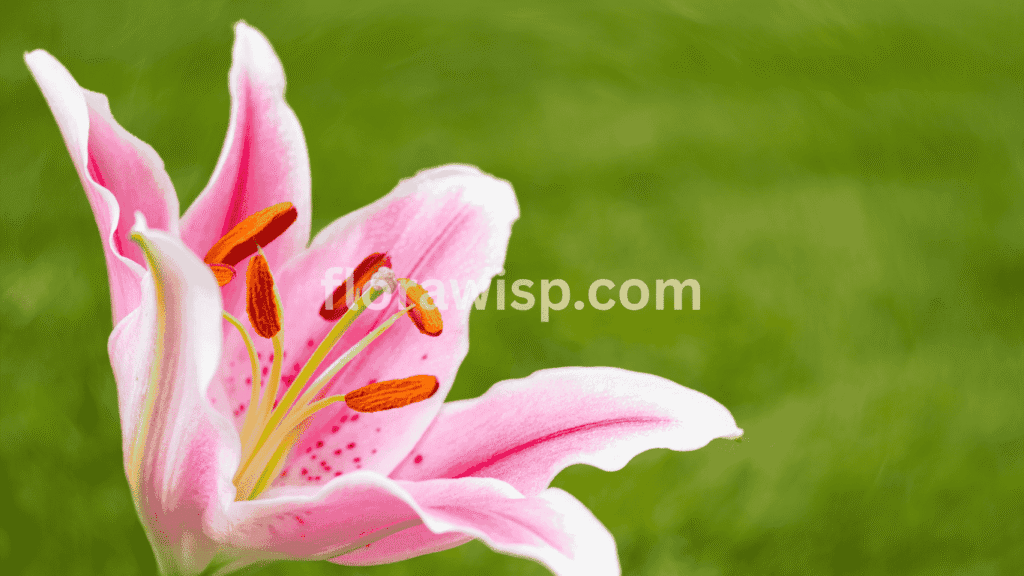
When it comes to fragrance, oriental lily bulbs are unmatched. The famous stargazer lily bulbs have a sweet, powerful scent that can fill an entire garden corner. I love planting these near patios or pathways where their perfume can be enjoyed up close.
Day Lilies – Long-Lasting and Reliable
Day lily bulbs are dependable bloomers that return year after year with minimal care. They’re drought-tolerant once established and bloom continuously, keeping the garden colorful when other flowers fade.
Tree Lily Bulbs – Height and Drama
For vertical interest, tree lily bulbs are unbeatable. These towering lilies can reach 6–8 feet and make a stunning backdrop for shorter perennials. I’ve planted them along fences and garden borders to create a layered, dramatic look.
Rose Lily Bulbs – Double the Beauty
Rose lily bulbs are perfect for those who want a touch of romance in their garden. With double petals that resemble roses, they combine elegance with the resilience of lilies. They’re a favorite in my mixed borders and look stunning in cut flower arrangements.
Creating a Garden That Blooms in Waves
I often mix different varieties in my garden beds: asiatic lily bulbs for early color, oriental lily bulbs for mid-season fragrance, and tree lily bulbs for height. This approach keeps my garden lively and eye-catching from early summer through late fall. While these outdoor lilies add dramatic flair, I also enjoy growing indoor beauties like the Peace Lily Flower, which brings lush greenery and delicate white blooms to shaded corners of my home.
Planting Lily Bulbs: Step-by-Step Guide
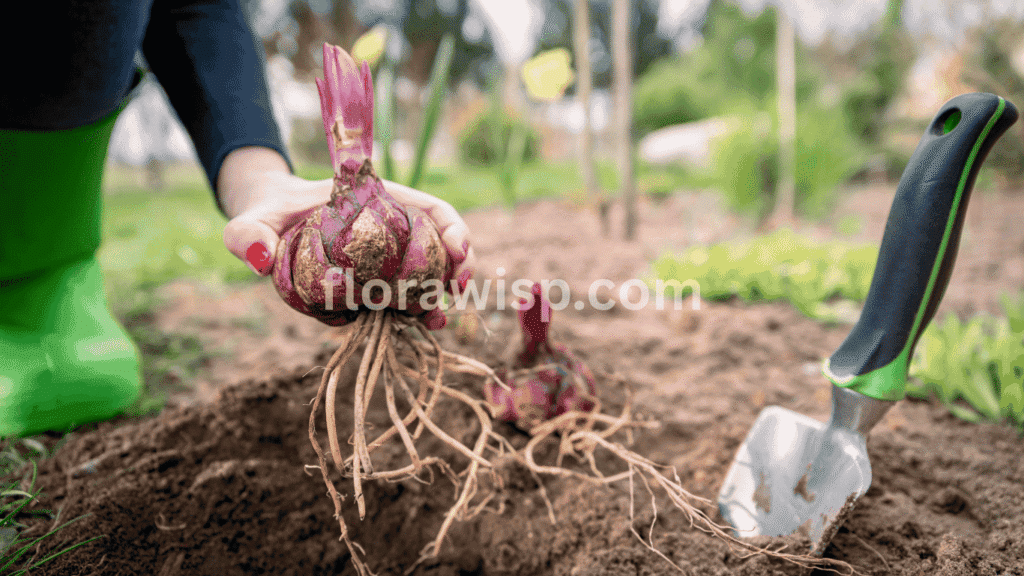
Planting lily bulbs the right way is the key to strong roots, tall stems, and blooms that last through the season. Over my years as a gardener, I’ve learned that a little extra care during planting makes a world of difference. Healthy bulbs combined with proper depth, spacing, and soil conditions create a garden that practically thrives on autopilot.
Choosing the Right Location
Lilies love sunlight. For the best results, I always choose a spot with at least 6 hours of direct sunlight each day. If your garden has partial shade, aim for morning sun followed by dappled afternoon light. Well-drained soil is equally important; nothing ruins lily bulbs faster than waterlogged soil. I often amend heavy clay with sand or perlite to improve drainage, especially for planting lily bulbs in low-lying areas.
Preparing the Soil
Before planting, I enrich the soil with compost or aged manure, mixing it at least 8–10 inches deep. This gives the bulbs a nutrient-rich foundation to establish roots. I also add a handful of slow-release bulb fertilizer to ensure steady growth throughout the season. A pH range between 6.0 and 6.5 works best for lilies, so I test the soil every spring to keep conditions ideal.
How to Plant Lily Bulbs Correctly
- Depth and Orientation: For most lilies, I plant bulbs 6–8 inches deep with the pointed end facing up.
- Spacing: I keep a distance of 8–12 inches between bulbs to prevent overcrowding and allow good air circulation.
- For Lily Trees: When planting lily tree bulbs, I go slightly deeper about 9 inches to support their taller stems and prevent them from toppling during storms.
Once the bulbs are in place, I water them thoroughly to help settle the soil and eliminate air pockets.
My Experience
I often plant lily bulbs in staggered groups of three or five for a natural, layered look. Adding 2–3 inches of mulch on top helps retain moisture, suppress weeds, and protect the bulbs from temperature swings. I also make sure not to plant too close to large shrubs or trees because lilies dislike competing for nutrients and light.
With these steps, my lilies rarely fail. Every season, they return stronger, producing more stems and larger flowers. When friends ask me how to plant lily bulbs successfully, my answer is always the same: quality bulbs, proper soil prep, and the right depth.
Seasonal Planting: The Perfect Time for Lily Bulbs
Why Timing Influences Growth
Even the healthiest lily bulbs won’t perform well if planted at the wrong time. Planting in the right season allows the bulbs to develop roots before pushing energy into blooming. Over the years, I’ve tested both fall and spring planting schedules, and each has its own benefits depending on your climate and goals.
Fall Planting for Early, Strong Blooms
In most U.S. regions, fall is the best time for planting lily bulbs. I usually plant mine between late September and early November. The cooler temperatures encourage root growth without stimulating early sprouting, ensuring the bulbs are strong and ready for spring. By the time warm weather returns, my fall-planted lilies produce blooms that are noticeably earlier and often larger than spring-planted ones.
Adding 2–3 inches of mulch in late fall helps insulate the bulbs through winter. This is especially helpful in areas with fluctuating temperatures, which can cause bulbs to heave out of the ground.
Spring Planting for a Flexible Start
For colder zones where the ground freezes early, spring planting works just as well. I start as soon as the soil is workable, typically around late March to April. The key is to wait until frost danger has passed and the soil temperature is consistently above 50°F. I’ve found that spring-planted bulbs bloom a little later, extending the flowering season well into summer.
Tips for Year-Round Success
- In warmer southern zones, fall planting works best due to mild winters.
- In colder northern zones, spring planting prevents bulbs from freezing before they root.
- If you’re unsure how to plant lily bulbs for your zone, consult the USDA hardiness chart or check local frost dates.
Planting at the right time ensures the bulbs focus on building a strong root system before blooming. Over the years, this seasonal timing has helped me maintain a garden filled with lilies that seem to get better every season.
Calla Lily Bulbs: Care and Growth Secrets
Why Calla Lilies Stand Out in U.S. Gardens
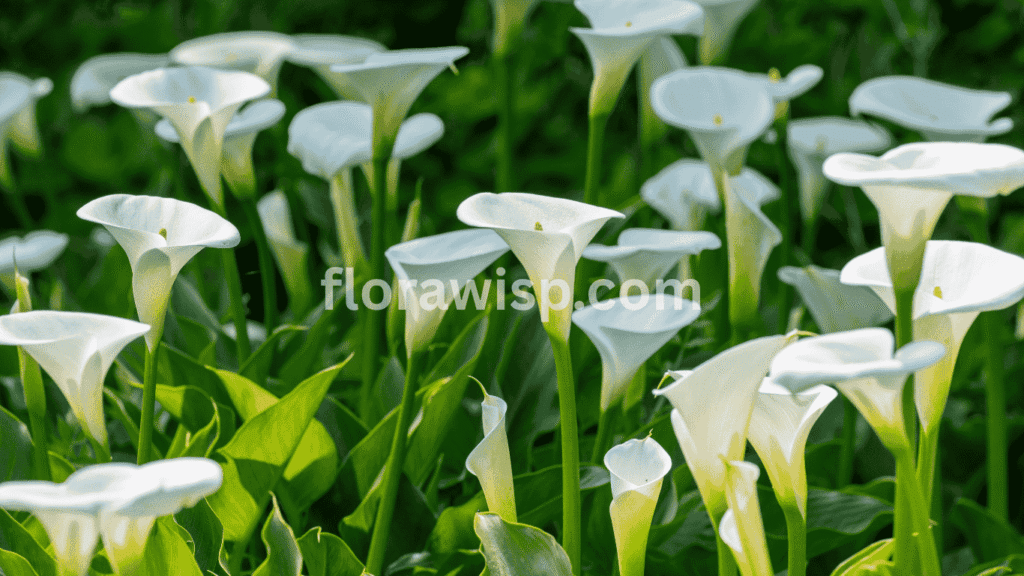
Among all the lily bulbs I’ve worked with, calla lily remain a favorite for their timeless elegance and ability to brighten shaded corners of any garden. Their trumpet-shaped blooms add a touch of sophistication, whether grown in a flower bed, patio container, or as cut flowers for a bouquet. Unlike Asiatic or Oriental lilies, calla lilies thrive in slightly moist soil and partial shade, which makes them perfect for areas where most lilies struggle.
My Experience Growing Calla Lily Bulbs
Over the years, I’ve noticed that calla lilies reward consistent care with blooms that last weeks longer than most varieties. When planting, I always bury each calla lily bulb about 4 inches deep with the growing tips facing upward. I water thoroughly after planting and ensure the soil stays moist but never waterlogged. These bulbs love consistent moisture, but soggy soil can lead to rot, so good drainage is essential.
One of my favorite tricks is to mulch around the plants with composted bark or straw. This not only helps maintain soil moisture but also keeps weeds from stealing nutrients from the bulbs.
Fertilizing for Longer Blooms
Calla lilies respond beautifully to regular feeding. I apply a slow-release fertilizer once a month, starting a few weeks after planting. This steady supply of nutrients supports both foliage and flower development, resulting in bigger, healthier blooms.
In my garden projects, I’ve observed that calla lily bulbs grown in nutrient-rich soil bloom for an extended period compared to those planted in average soil. If you’re planting them in containers, remember to refresh the potting mix every season, as potted soil can quickly lose nutrients.
Buying and Planting in Bulk
For larger landscapes or wedding decor projects, I often purchase calla lily bulbs in bulk. Not only is this cost-effective, but it also ensures a consistent bloom pattern across multiple planting areas. When shopping for calla lily bulbs for sale, I recommend choosing reputable nurseries that specialize in fresh, high-quality rhizomes. Over time, I’ve learned that fresh bulbs produce stronger stems and more vibrant flowers compared to older, dried-out stock.
Canna Lily Bulbs: Bold Colors and Easy Maintenance
Canna Lilies: The Tropical Showstoppers

When it comes to bold color and lush greenery, canna lily bulbs are unmatched. These tropical beauties bring a splash of red, orange, or yellow to any garden and create an instant vacation-like vibe. In my experience, canna lilies are among the easiest lily bulbs to grow, especially in southern U.S. states where the climate is warm and sunny.
Planting Canna Lilies for Maximum Impact
I usually plant canna lilies bulbs in late spring when all danger of frost has passed. These bulbs thrive in full sun and require plenty of warmth to grow to their full potential. I plant each bulb 4–5 inches deep and space them 12–18 inches apart to give their wide leaves plenty of room to spread. After planting, I water generously and continue to keep the soil evenly moist during the growing season.
Feeding and Care Routine
For the boldest flowers, I feed my canna lilies with a balanced fertilizer every 4–6 weeks. They are heavy feeders, and a nutrient boost keeps the foliage lush and the blooms vibrant. Regular deadheading (removing spent flowers) encourages continuous blooming through summer and into early fall.
Storing Canna Lily Bulbs in Colder Regions
In warmer climates, canna lilies can stay in the ground year-round. However, in colder northern states, the bulbs need protection from frost. I dig up my canna lily bulbs for sale in late fall once the foliage begins to yellow. To store them:
- Gently remove soil and allow the bulbs to air-dry for 2–3 days.
- Place them in a box filled with peat moss or sawdust to prevent them from drying out.
- Store them in a cool, dark, and frost-free location like a basement or garage.
This method has saved my bulbs year after year, ensuring they are ready to be replanted every spring.
Why I Love Growing Canna Lilies
Canna lilies are perfect for gardeners who want dramatic color with minimal maintenance. Once established, they require little more than occasional watering and feeding. I often use them as a background plant in mixed borders or around poolside gardens because their tall, tropical foliage creates a natural privacy screen.
Rare and Exotic Lily Bulbs Worth Growing
If you’re looking to bring something truly unique to your garden, rare and exotic lily bulbs can create a breathtaking focal point. Over the years, I’ve experimented with unusual varieties that stand out for their striking shapes, colors, and growth habits. These special lilies may require a bit more attention, but their dramatic blooms make every effort worthwhile.
Spider and Red Spider Lily Bulbs
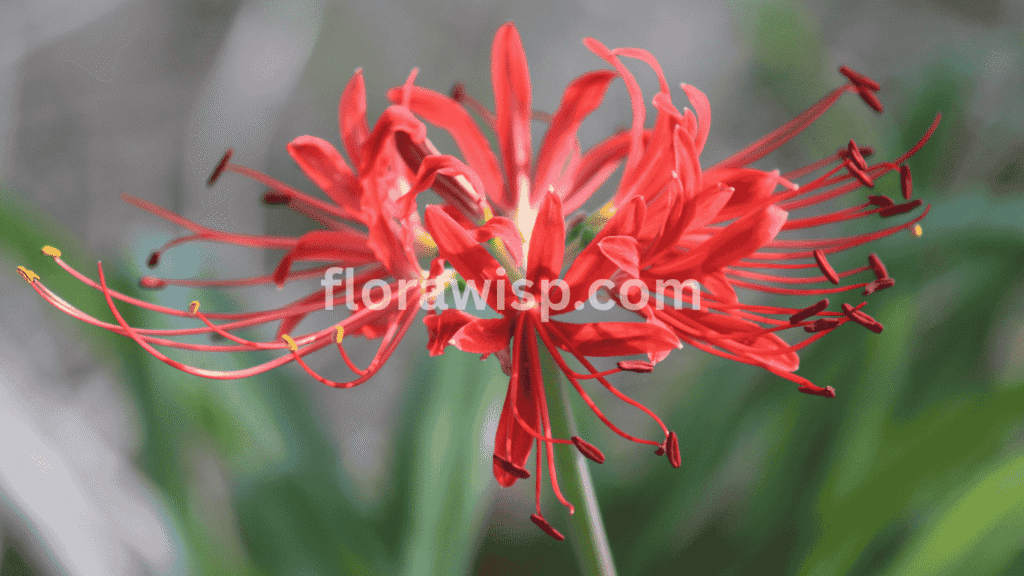
One of my favorite choices for a bold statement is spider lily bulbs. Their delicate, spidery petals create an almost otherworldly look, especially when planted in clusters. I remember planting red spider lily bulbs near the edges of my garden walkway. They exploded in fiery red blooms that drew compliments from every visitor. These bulbs are low-maintenance but thrive best when planted in well-drained soil and partial to full sun.
Foxtail Lily Bulbs
If you want height and drama, foxtail lily bulbs are unmatched. The first time I planted them, their tall, tapering spires stood like glowing torches over my summer beds, some reaching up to 5–6 feet. I recommend mixing them with lower-growing perennials for a layered look. Foxtail lilies love sunny spots with fertile, sandy soil. Adding compost before planting helps these tall bloomers stay strong through the season.
Belladonna Lily Bulbs
Belladonna lily bulbs are another exotic gem. Their soft, pink trumpet-like flowers emerge on bare stems, creating a graceful, sophisticated display. I often plant them near garden edges or entryways where their subtle fragrance can be appreciated. They prefer warm climates but can be grown in containers in colder zones if moved indoors during frost.
Rain Lily Bulbs
Few flowers bring as much delight as rain lily bulbs. Also known as bulbs rain lily, they bloom almost overnight after a heavy rain. In my garden, I plant them in clusters to create a carpet of blooms that appears like magic following a summer shower. These bulbs thrive in loamy, well-drained soil and are excellent for borders and pathways.
Where to Find Exotic Lily Bulbs
Sourcing rare bulbs can be tricky. I’ve had success ordering spider lily bulbs and other unusual varieties from specialty nurseries or online bulb suppliers. Though they may cost more, the visual drama they add to a garden is priceless. Every season, my exotic lilies become the conversation starters during garden tours.
Specialty Lilies for Every Occasion
Some lily bulbs are grown not just for beauty but for their symbolic and seasonal appeal. Over the years, I’ve planted specific varieties for holidays, weddings, and even as thoughtful gifts. These specialty lilies bring both visual elegance and a touch of meaning to every occasion.
Easter Lily Bulbs
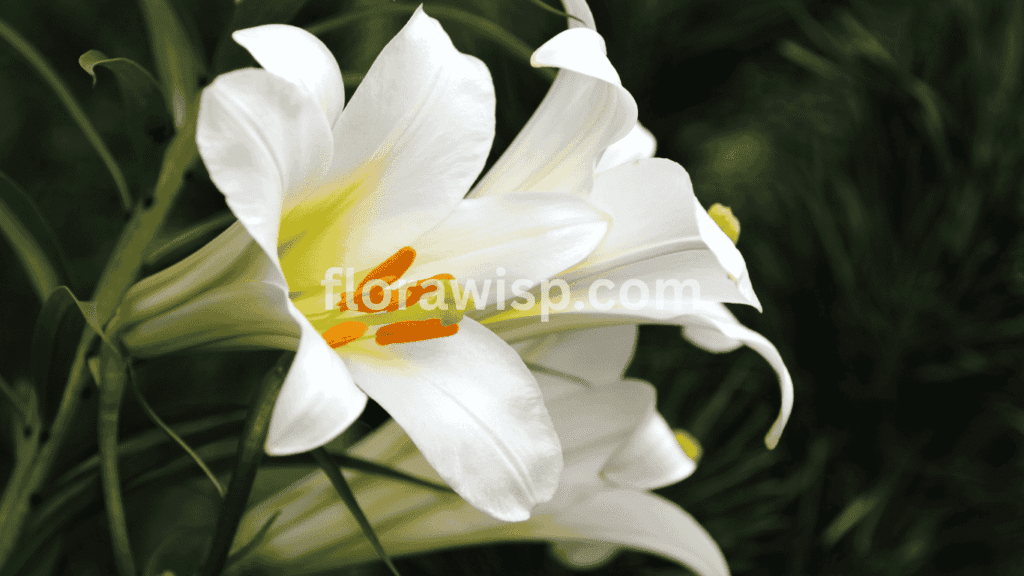
Easter lily bulbs are one of the most cherished varieties during spring celebrations. Known for their pure white, trumpet-shaped flowers, they symbolize renewal and hope. I often grow them indoors in containers to time their blooms perfectly for Easter. By placing the pots near bright windows and keeping the soil evenly moist, I can ensure the blooms are at their peak just in time for the holiday.
Water Lily Bulbs
Though not true lilies, water lily bulbs add an enchanting charm to ponds, fountains, and garden water features. I’ve planted them in shallow water containers, and their floating blooms instantly transform any space into a tranquil retreat. They thrive in calm waters with at least 5–6 hours of sunlight. I like pairing them with marginal aquatic plants for a complete, serene landscape.
Lily of the Valley Bulbs
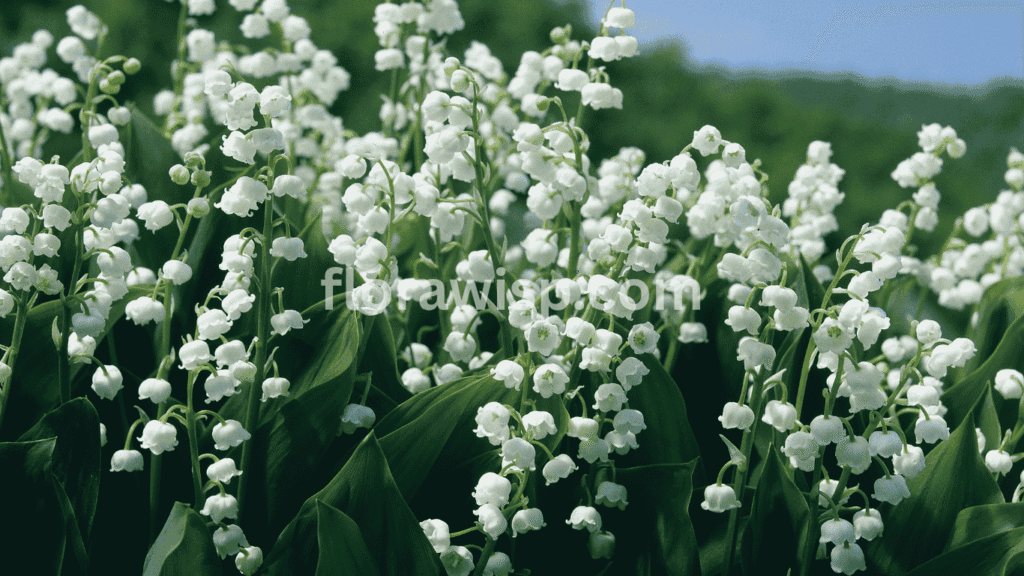
Among specialty lily bulbs, lily of the valley bulbs are my personal favorite for shaded spots. Their tiny, bell-shaped flowers release a sweet fragrance that lingers in the garden air. I’ve successfully grown them in loamy, well-drained soil under the canopy of larger shrubs, where they thrive in partial to full shade. A single cluster of these bulbs can spread over the years, forming beautiful groundcover carpets.
Designing with Specialty Lilies
I love mixing specialty lilies into themed garden beds or using them for seasonal displays. For example, Easter lily bulbs in elegant ceramic pots make perfect centerpieces during spring gatherings, while lily of the valley bulbs are a timeless choice for wedding bouquets.
Why Invest in Specialty Lily Bulbs?
Adding specialty lilies to your garden isn’t just about color, it’s about creating experiences. The fragrance of lilies of the valley or the elegance of Easter lilies can transform your outdoor spaces into places of beauty and memory. These unique lily bulbs have earned a permanent place in my garden for their sentimental and ornamental value.
Buying Guide: Where to Find Quality Lily Bulbs
Healthy lily bulbs are the foundation of a thriving garden. No matter how perfect your soil or weather conditions are, planting poor-quality bulbs will lead to weak growth or no blooms at all. Over my years as a gardener, I’ve seen firsthand how investing in premium bulbs translates to vibrant flowers and sturdy stems. A good bulb should feel firm, plump, and slightly heavy soft or shriveled bulbs are often signs of rot or disease.
Where I Source My Lily Bulbs
When searching for lily bulbs for sale near me, I prefer trusted local garden centers and specialty nurseries. These sellers often have better storage practices and can give you detailed information about the bulbs’ origin and care. Online stores can also be excellent sources, but I always check reviews and ensure the bulbs are shipped fresh. Some reputable suppliers ship bulbs directly after harvest, which significantly improves bloom quality.
Tips for Buying Online and Locally
- Inspect the Bulbs: Whether buying in-store or online, I always choose bulbs that are blemish-free and have healthy basal roots.
- Check for Freshness: A quick squeeze test is my go-to method. Fresh lily bulbs should feel solid, not mushy.
- Look for Certified Stock: Disease-free certification ensures bulbs are free from common fungal infections like botrytis.
Tiger Lily Bulbs and Other Favorites
Among all varieties, tiger lily bulbs for sale are among the most sought-after for their bold, orange petals speckled with dark spots. These bulbs are incredibly hardy and do well in both garden beds and containers. I’ve planted them for years, and they continue to multiply naturally with minimal care.
If you’re buying lily flower bulbs for sale in bulk, always check that they’re packaged correctly with proper labeling. This is particularly important when purchasing mixed or specialty varieties, as correct identification ensures you plant them at the ideal time and depth.
Why Premium Bulbs Are Worth the Cost
Spending a little more on top-quality lily bulbs for sale pays off season after season. Premium bulbs have higher energy reserves, which means bigger flowers, longer blooming periods, and healthier plants that return year after year. I’ve learned this through experience cheaper bulbs often fail to produce the same results.
Unique Lily Colors to Try in Your Garden
Color is where lilies truly shine. White lily bulbs create a classic, elegant look, while black lily bulbs add drama and contrast to flower beds. Blue lily bulbs are rare and often combined with lighter shades for a striking effect.
I like to mix colors in clusters white lilies with black tulips, or blue lilies with yellow daffodils for a bold visual statement. These unique color combinations have always made my garden a conversation starter among neighbors and visitors.
Conclusion
Healthy lily bulbs are the foundation of a thriving, colorful garden. By choosing the right varieties, planting flowers correctly, and maintaining them with care, you can enjoy blooms that return year after year. I encourage every gardener to experiment with both classic and exotic bulbs to create a landscape full of personality and charm.
FAQs
Q. How to plant lily bulbs?
To plant lily bulbs, dig a hole 6–8 inches deep, place the bulb with the pointed tip facing upward, and cover it with loose, well-draining soil. Water thoroughly right after planting to help the bulbs settle. In my garden, I always mix in compost or aged manure to boost soil fertility and add a 2-inch mulch layer to retain moisture. This method consistently results in healthy root systems and vibrant blooms.
Q. How to plant calla lily bulbs?
Plant calla lily bulbs 3–4 inches deep in rich, well-draining soil, ensuring they’re spaced about 6–8 inches apart. Partial shade or filtered sunlight is ideal, especially during hot afternoons. I keep the soil evenly moist but never waterlogged, as these bulbs dislike standing water. From experience, fertilizing monthly with a balanced, slow-release fertilizer during the growing season leads to lush leaves and long-lasting flowers.
Q. How to store canna lily bulbs?
To store canna lily bulbs, dig them up after the first frost, gently brush off excess soil, and allow them to dry for 3–5 days. Once dry, place them in peat moss or sawdust inside a ventilated container and store in a cool, dark spot (around 40–50°F). I’ve stored my bulbs this way over many winters, and they remain healthy for up to two years, ready to be replanted in spring.
Q. What do lily bulbs look like?
Lily bulbs have a layered, scaly appearance, often resembling a garlic bulb with overlapping segments. Healthy bulbs feel firm and slightly moist, with a creamy white or pale yellow color. Any signs of mold, soft spots, or shriveling usually indicate rot or poor viability. When I buy bulbs, I always look for those with a solid basal plate and fresh root growth, as they produce the most reliable blooms.
Q. When to plant tiger lily bulbs?
The best time to plant tiger lily bulbs is in early spring or late fall, depending on your USDA zone. I personally prefer fall planting, between September and early November, as this allows the bulbs to establish strong roots before winter. By spring, they shoot up faster and bloom earlier. Plant them 6–8 inches deep and space them generously to encourage healthy growth and natural multiplication over time.
Q. Where to buy edible lily bulbs?
You can buy edible lily bulbs from Asian grocery stores, farmers’ markets, or online specialty food suppliers. It’s crucial to ensure the bulbs are marked as edible-grade, pesticide-free, and fresh. I recommend checking for firm, white bulbs without discoloration or mold. Edible lily bulbs, such as those from Lilium lancifolium, are often used in Asian cuisine for their crisp texture and mild, nutty flavor when stir-fried or added to soups.
Q. Where to buy lily bulbs?
Lily bulbs can be purchased from trusted garden centers, local nurseries, or online retailers. I personally prefer nurseries that ship fresh, seasonal stock because the bulbs are less likely to have been stored for too long. Websites that specialize in bulbs often provide a wider selection, including tiger, Oriental, and Asiatic lilies. For the best results, I recommend buying bulbs in early spring or fall when they’re at peak quality.
References
Growing lilies in home gardens – SDSU Extension
Calla lily care guide – University of Arkansas Coop. Extension
How to overwinter calla lilies – Iowa State Extension
Gardener, M.Sc. Horticulture
Elara Bennet is a gardening writer from Austin, TX, passionate about sustainable lawns and blooms. Read full bio →

